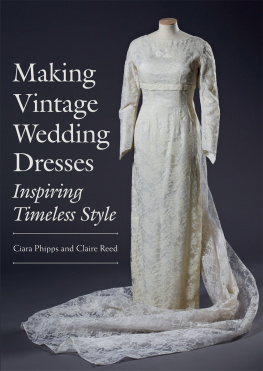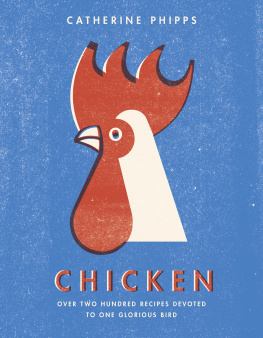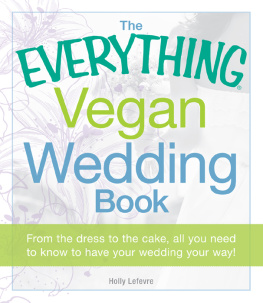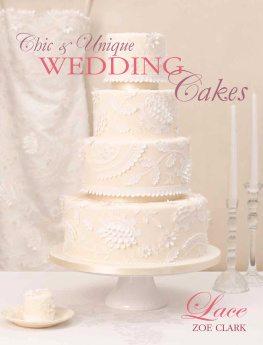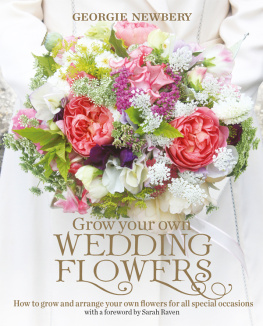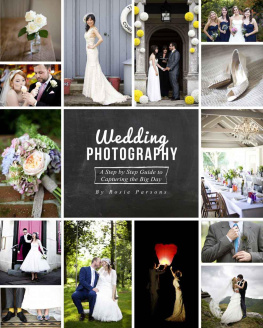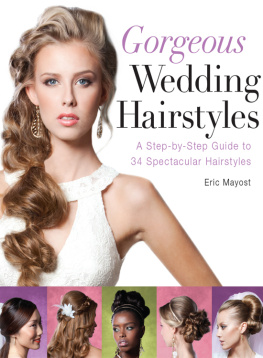Making Vintage
Wedding Dresses
Inspiring Timeless Style

Making Vintage
Wedding Dresses
Inspiring Timeless Style

Ciara Phipps and Claire Reed


THE CROWOOD PRESS
First published in 2017 by
The Crowood Press Ltd
Ramsbury, Marlborough
Wiltshire SN8 2HR
www.crowood.com
This e-book first published in 2017
Ciara Phipps and Claire Reed 2017
All rights reserved. This e-book is copyright material and must not be copied, reproduced, transferred, distributed, leased, licensed or publicly performed or used in any way except as specifically permitted in writing by the publishers, as allowed under the terms and conditions under which it was purchased or as strictly permitted by applicable copyright law. Any unauthorised distribution or use of thistext may be a direct infringement of the authors and publishers rights, and those responsible may be liable in law accordingly.
British Library Cataloguing-in-Publication Data
A catalogue record for this book is available from the British Library.
ISBN 978 1 78500 313 4
Frontispiece: Close-up of knots on 1940s knot-front wedding dress. (Photo: Tessa Hallmann Photography)
Dedications
To my late mother Dorothy Phipps I dedicate this book. Her passion for, and her ability to create romantic, elegant and timeless wedding gowns ignited my passion to research, explore and write about them.
To the memory of my mentor and dear family friend, Yvonne Wallhauser Vivi, who taught me everything I know about the art of the couturier and whose exquisite skills with a needle I can but dream to emulate.
And for Dad, who would have been so proud.
To all brides-to-be, for your excitement, giddy anticipation and eternal style we dedicate this book to you.
Contents
Making vintage-style wedding dresses is a hugely exciting and fulfilling experience. Either for yourself or as a commission for someone else, making a wedding dress inspired by historic fashions and trends allows you to express yourself through timeless and elegant styles. This book explores the history of wedding wear, with instructions, patterns and photos; it looks at and celebrates the historic shapes, detailing and romance of vintage wedding gowns.
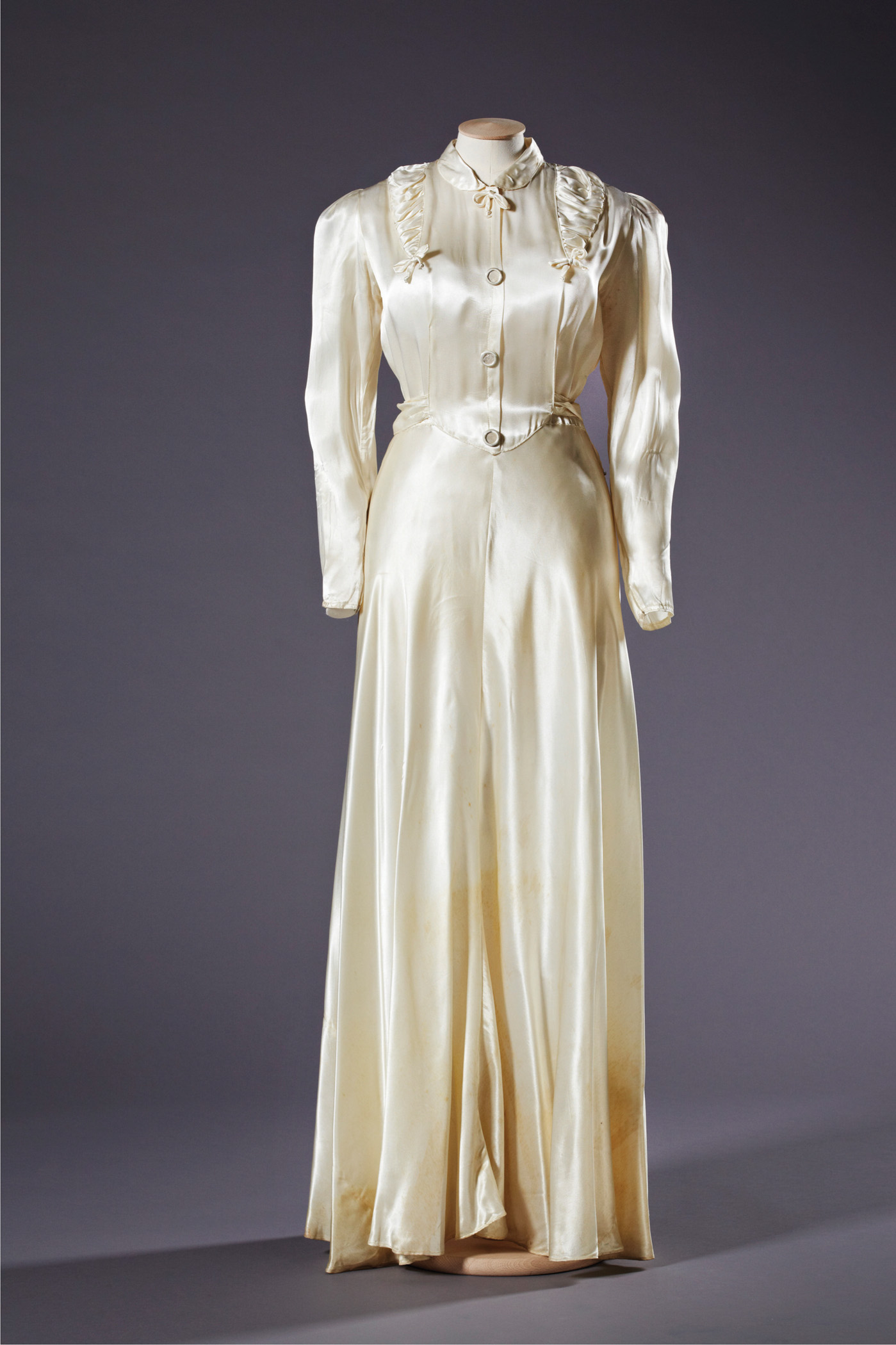
1940s Utility Clothing Scheme wedding dress. (Photo: Tessa Hallmann Photography).
Weddings are amongst the most memorable and defining events of our lives. They conjure excitement, anxiety, anticipation and passion and allow the couple involved to indulge their imaginations in a manner and style of wedding that is befitting of their personal preferences and tastes. Whatever size of wedding you might choose, however elaborate or understated it might be, the most captivating visual element of most weddings is the bride. The brides dress will be the focus of much attention throughout the day, and it is because of this that vintage wedding styles still enthral and enchant given their timeless and classic appearance. Wearing a dress you have commissioned or made yourself will also add to the magic of your dress, providing it with a deepened level of meaning and personal attachment. An outfit you will cherish forever.
As a garment, the wedding dress is saturated with emotions and meaning. This dress is worn for an event that is still deemed one of the most significant in a persons life, steeped in tradition and spirituality. The wedding as a construct is loaded with social expectations and religious significance for many couples, which demonstrates the importance that is placed on this garment. For many people, it will be the most expensive and significant outfit they will ever purchase, which is why they can spend so much time seeking inspiration and ideas from all around. Few other garments require or receive as much thought or consideration as the wedding dress does. As a unique garment, selecting or making the wedding dress or outfit is a rite of passage for the bride-to-be. Bridal outfits can tell you so much about the person who wore it, the society and culture in which it was made, and the economic context of the time.
To assist the maker, this book has explored the history and context of historic wedding styles, designers and ceremonies from each of the eras covered in this book. This is done to provide you with a good grounding for what you could achieve by using one of these patterns, why you might choose to wear a vintage inspired wedding gown, and how designers and the wearers of the time translated these styles.
This book sets wedding gowns in a historical context by exploring both the ready-to-wear bridal market and the role couture fashion houses played in the developing styles and status of wedding gowns. It will look at the importance of royal weddings (and the court dressmakers associated with these weddings) in influencing and inspiring prospective brides, and explore how the relationship between bridal fashion and high fashion has fluctuated over the decades. The vastly changing silhouette will be investigated through the periods covered, providing the reader with a clear understanding of how shape and silhouette have changed and how they might work with such silhouettes for their own dress.
The book starts with the heavily beaded tubular dress of the 1920s, designed to flatten the bust and increase the wearers movement and comfort, moving on to the slinky figurehugging bias cut silhouette of the 1930s wedding gown using fabric to highlight the contours of the female body in an elegant way. It then moves on to the sobriety of the 1940s utilitarian wedding outfit that was forced to make-do with the fabric that was available, and dressing it up with perfectly rolled hair, and a glamorously made up face utilizing the burgeoning cosmetics industry. The extravagant and glamorous 1950s hourglass ball gown with a nipped-in waist and frothy skirt illustrates a return to the restrictive femininity of the corseted figure, that dictated the movement and shape of the wearer. The final decade covered in this book discusses the extreme change bridal attire went through in the newly liberated 1960s. From the loosening of clothes, the ditching of corsets and the development of the miniskirt, the 1960s made clear wedding dresses were evolving to push against the traditions of the wedding in the form of the body skimming shift dress.
There are elements of wedding attire that remain a constant throughout the decades represented in this book; these are the accoutrements to the wedding dress such as the veil, train, bouquet and the headdress. They are also subject to adaptation and change given changing fashion trends and styles. The benefit the modern bride has is the huge variety of styles, shapes, fabrics and accessories they can call upon to create their dream dress. By using historic styles and garments to inspire their contemporary counterpart, the most suitable elements can be chosen, ensuring the garment works for their figure, their taste and their budget. They can express their personal style in a unique way by referring to historic techniques or styles, or by even sourcing and wearing vintage accessories to finish the look.
Next page
